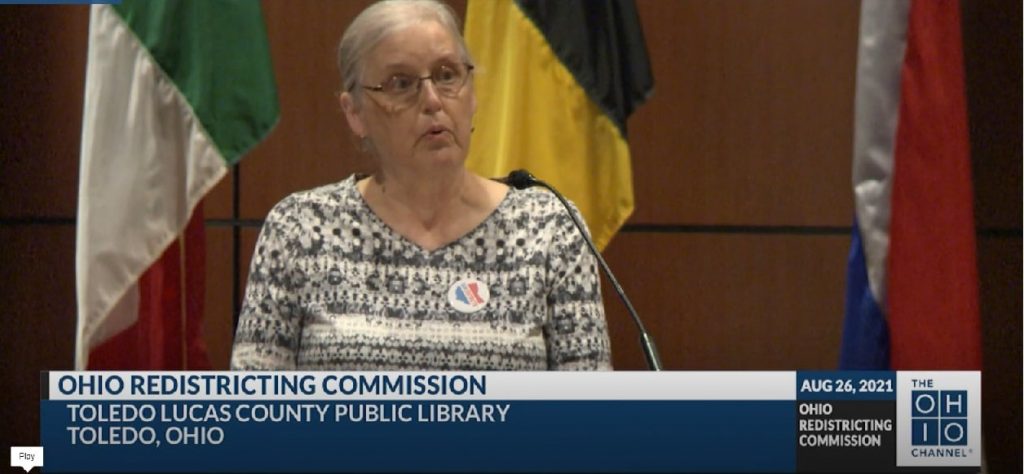At the hearings on Ohio redistricting in Toledo, Dorothy Singer addresses the privatization of K-12 education and how the children from rural counties are left behind. Visit her talk at https://www.ohiochannel.org/…/ohio-redistricting… . Dorothy’s 4-minute testimony starts at 1:45:00 (i.e., 1 hour, 45 minutes, 00 seconds). A full text version follows:

“I am Dorothy Singer, a resident of Noble Township, formerly of Washington Township in Defiance County. I am a daughter, wife, mother, grandmother, sister, friend, and community volunteer. I most recently taught composition classes at Defiance College.I would like to comment on my recent reading on the topic of education funding. I realize this has been a challenging issue for our state for many years. It seems to me that unfair representation caused by gerrymandering serves only to further cloud this complex issue. On The Fordham Institute website, I recently read praise of the latest budget bill for addressing matters of school funding. Specifically, the article states, “the [new] state budget greatly bolsters Ohio’s school choice options.” It went on to list several provisions benefiting charter schools and private-school scholarship programs, including tax breaks for those who donate to private scholarships.When 90% of Ohio school children attend local public schools, I am left wondering at the underlying ideology of The Fordham Institute’s praise of “school choice.” In the rural school district, Central Local Schools (Fairview), where we raised our children, the closest private schooling was available only through grade 8 and would have required the sacrifice of a commute for school and extra curriculars. This was no choice for a family with four children spaced over 8 years. The benefit to enroll one child would come at the expense of our obligations to our other children and also to our aging parents.How does this new state budget affect rural residents in similar situations? Public schools are not only the most convenient educational choice for rural residents, but they also serve as powerful glue for community cohesion. Rural residents deserve schools that are not only convenient, but schools that offer an equitable education. Two of our sons earned admission to the University of Notre Dame. When they arrived, they discovered that many of their peers entered with a multitude of college credits. Our sons had no such advantage because their rural public school had to allocate limited funds where the need was greatest—not toward innovative college prep classes. This was our wake-up call about the inequities within our educational system. As parents we found ourselves paying for classes that our sons’ classmates had already taken in their private or well-funded suburban public schools. I led the academic association at our high school for six years, yet I felt powerless against the systemic injustices. I found an explanation from a former state legislator in the Tiffin online newspaper. He points out, “Under one-party control, you saw flat funding to public schools and massive funding to private schools and private school vouchers.” His blunt conclusion: “Divided government gets you more state funding” for public schools. Is it fair that our government, dominated by one party that has only a very slight advantage in actual voters, aims to prioritize 10% of the population at the expense of the 90% attending public schools?Partisanship necessarily factors into school funding plans—that is the nature of democratic governing. Yet unfair representation silences the voices of voters living in gerrymandered districts. Holding seats that are secure, representatives in these districts have no need to listen to their voters. Rather, monied interests vie for and often receive their undivided attention. The First Energy bribery scandal points to the danger of such “representation.” I urge you to work hard to draw our new district maps as fairly as possible so that the interests of all school children are equitably represented. Let us aim to leave no child, no matter where she lives, behind.”


Comments are closed